Berkeley Labs are developing a new type of spin-resolved ARPES tool
Researchers at Berkeley Labâs Advanced Light Source (ALS) facility are developing a new type of spin-resolved ARPES (angle-resolved photoemission spectroscopy) tool.
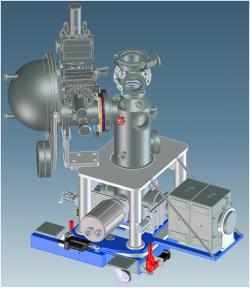
Researchers at Berkeley Labâs Advanced Light Source (ALS) facility are developing a new type of spin-resolved ARPES (angle-resolved photoemission spectroscopy) tool.

Graphene is one of the leading candidates for Spintronics materials, and now researchers from Manchester University report on a new breakthrough - they managed to create elementary magnetic moments in graphene and then switch them on and off. This is the first time magnetism itself has been toggled, rather than the magnetization direction being reversed. They say this is a major breakthrough on the way towards graphene based Spintronics transistor-like devices.
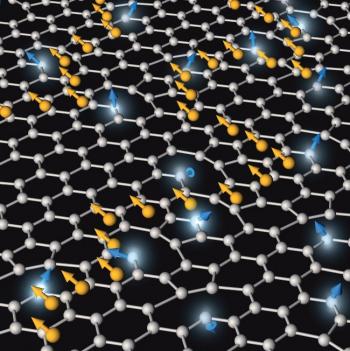
The new research shows that electrons in graphene condense around vacancies ("holes" in the graphene sheet created when some carbon atoms are removed) - and create small "electronic cloud". These clouds carry a spin, and the researchers managed to dissipate and then condense back those clouds. So these clouds can be used to store information in graphene. To read them, one can use an electric current, or a spin flow.
NEC and Tohoku's University have jointly developed a new spintronics-based logic prototype chip specifically aimed towards text search systems. Early testing suggest that this new chip has drastically reduced power consumption - 1% or even less compared to conventional systems (DRAM and CPU). This significant reduction was achieved due to the non-volatility of the spintronic circuit which only requires power to necessary circuit blocks and does not require any standby power.
NEC and Tohoku developed new multi-functional CAM cells for text-search logic. The new CAM cells are able to avoid searching for long index texts when searching for short lengths of text within a large amount of index data. This was achieved by setting up combinations (patterns) of input signals that represent long texts. This enables circuits to detect when a long text is input, and to avoid any further unnecessary operations.
A combination of Manganese and Gallium Nitride was once a promising spintronics material, but it was later abandoned when it was found that these two materials aren't harmonious. But now researchers from Ohio university (in collaboration with Argentinian and Spanish researchers) developed a way to incorporate a uniform layer (at least on the surface) from the materials.
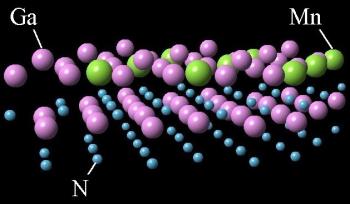
The researchers used the nitrogen polarity of gallium nitride (old experiments used the gallium polarity) to attach to the manganese, and they also heated the sample which prevents the manganese atoms from "floating" on the outer layer of gallium atoms and instead made the connection that created the manganese-nitrogen bond.
Researchers from the US DoE's Lawrence Berkeley National Laboratory developed a new technique for hyperpolarizing carbon-13 nuclear spins in diamond, that enhances the sensitivity of Nuclear Magnetic Resonance (NMR) and Magnetic Resonance Imaging (MRI) by many orders of magnitudes compared to available techniques.
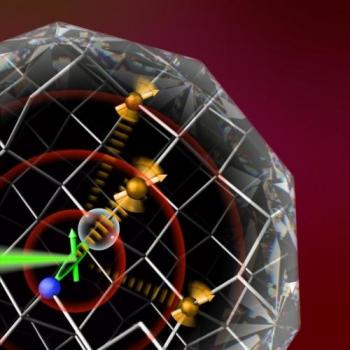
Researchers from the University of Chicago's Institute for Molecular Engineering developed a new technique that can full control the electronic spin of the nitrogen vacancy center (an atomic-scale defect) in diamonds. This may pave the way towards light based Spintronic quantum computers.
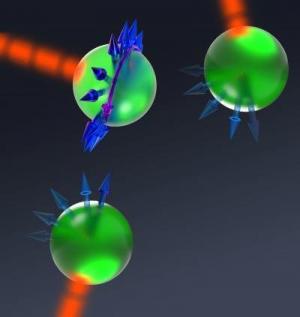
The same team also developed a new temperature sensor that is based on manipulation of the same nitrogen vacancy center defect in diamonds. Nanoscale magnetic and electric fields sensors have already been developed, but this is the first temperature nanoscale sensor.
 NVE Corporation has been awarded a one-year $224,000 contract by the National Science Foundation (NSF) to develop Spintronics-based biosensors to enhance food safety. NVE will cooperate on the research with the University of Minnesota and the University of Florida.
NVE Corporation has been awarded a one-year $224,000 contract by the National Science Foundation (NSF) to develop Spintronics-based biosensors to enhance food safety. NVE will cooperate on the research with the University of Minnesota and the University of Florida.
The contract is titled "Real Time Detection for Salmonella", and its goal is to develop sensors capable of faster detection of food-borne pathogens than current techniques while retaining equivalent sensitivity. The sensor could also be extensible to other biomarkers and could be envisioned as a critical point-of-care sensor in the medical industry.
Samsung Electronics launched a new global research outreach program aimed towards STT-MRAM innovation. The Samsung Global MRAM Innovation (SGMI) is looking for colleges, universities and research labs from all over the world to explore breakthrough and innovative STT-MRAM research.
Samsung invites submissions for novel ideas on STT-MRAM research - and the selected proposals will receive financial support from Samsung (around $70,000 to $150,000 for one year programs). The deadline for submission is September 28, 2013.